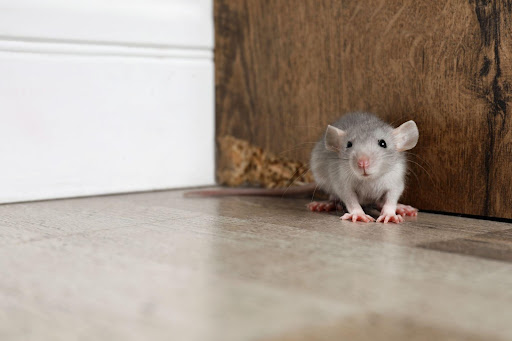The home is often considered a refuge from the world, and pest proofing our homes is a great way to keep it that way.
Pests are the smallest of invaders, but they disrupt everything and leave us feeling vulnerable. Whether it’s the silent crawl of ants in your kitchen or the unexpected sight of a spider in the bathroom, these tiny trespassers cause outsized distress.
So, how do we keep bugs out of the house effectively? From understanding their favorite entry points to implementing preventative measures, this blog offers a thorough exploration into safeguarding your home. Dive in to fortify your defenses and ensure your abode remains the peaceful haven it’s meant to be.
A List of Unwanted Visitors
From the tiniest of insects to more noticeable rodents, it’s essential to know who these unwanted visitors are so we can take the necessary steps to keep them at bay. Take a look at our list to familiarize yourself with the common culprits that might be lurking in the corners of your home.
Common Household Pests
Rodents
Rodents like mice and rats are among the most frequent unwanted visitors in households worldwide. Their small size, agility, and adaptability have equipped them to thrive in numerous environments.
But rodents risk our health, damage our property, contaminate our food, reproduce, make lots of unwanted noise, and invite other pests in. We don’t want them doing any of that in our homes!

Insects
Insects often enter our homes seeking shelter, food, or a breeding environment. While some might be harmless, many pose significant problems. From health concerns and allergens to structural damage and bites and stings, these pests are best kept outside.
Spiders
In as much as spiders are helpful in killing other pests, they are a pest themselves and don’t belong in our homes. Not only are people afraid of them, but spiders bite, produce silk webs wherever they go, lay eggs in egg sacs, and are a sign of other pests that might be making their way into our homes.
Ants
While ants play a crucial role in the ecosystem, acting as decomposers and aerating the soil, they’re far less appreciated when they march into our homes. Ants are persistent foragers that contaminate our food and are extremely difficult to eradicate. There are various species, all of which cause different issues, making them altogether unwelcome in our homes.
General Pest Proofing Tips
While every home is bound to encounter a pest at some point, prevention is the key to managing these unwelcome guests. By taking proactive steps, you’ll significantly reduce the likelihood of infestations, ensuring a comfortable, pest-free environment.
Whether dealing with tiny insects or larger rodents, the following pest proofing tips provide a comprehensive guide to safeguarding your home against potential intruders.
- Regular Cleaning: It’s important to keep your home clean. This is especially true in the kitchen since crumbs and spills attract pests.
- Seal Entry Points: Inspect your home’s exterior for cracks, holes, or gaps, and seal any you might find. Focus on areas around windows, doors, and where utility pipes enter your home.
- Proper Food Storage: Store food in airtight containers, especially grains, cereals, and pet foods, which attract pests.
- Eliminate Standing Water: Ensure there’s no stagnant water around your home, as this attracts mosquitoes and provides water sources for all sorts of pests.
- Regular Trash Disposal: Did you know that outdoor pests surrounding your garbage can often lead to indoor pests? Empty trash bins regularly and seal them properly, keeping pests away from potential food sources.
- Maintain Landscaping: Trim shrubs, trees, and bushes near the house since overgrown vegetation provides shelter and a pathway inside for pests.
- Store Firewood Away From Your Home: If you have firewood, keep it at least 20 feet from your home and five inches off the ground. This prevents rodents and insects from taking up residence.
- Install Screens: Ensure that your windows and vents have fine mesh screens to prevent flying insects or pests from getting in.
- Regular Inspections: Regularly inspect the less-traveled areas of your home for signs of pests or their droppings. Think attics, basements, and crawl spaces.
- Reduce Clutter: Pests like to hide. Reduce clutter in your home to limit their hiding spots. This is especially important for storage areas.
- Gutter Maintenance: Keep gutters clean and ensure they drain properly to prevent water from accumulating.
- Natural Repellents: Consider using natural repellents like essential oils to deter pests. Pepper oil is excellent for repelling spiders.
- Pet Hygiene: Regularly groom and check pets for fleas and ticks. Ensure their bedding is cleaned regularly.
- Use Door Sweeps: Install door sweeps on exterior doors to prevent pests from crawling underneath.
- Avoid Overusing Mulch: If you use mulch near your home’s foundation, ensure it’s not too thick. Thick mulch might create a moist environment favorable for pests.
- Rotate Pantry Foods: Regularly rotate and check food items in your pantry to prevent and spot any signs of pantry pests.

Entry Points: The Usual Suspects
Every fortress has its vulnerabilities, and our homes are no exception. Some pests would enjoy making our home theirs, too. But how do they get in? Understanding and identifying common entry points is crucial in our efforts to keep bugs out of the house.
Cracks and Crevices
The cracks and crevices hidden in our homes’ foundation, walls, or flooring act as silent gateways for pests. Small insects like ants and cockroaches particularly exploit these gaps, sneaking into our homes unnoticed.
These nooks and crannies also provide a safe haven for pests to breed and nest, exacerbating infestations. Regular inspection and sealing of these vulnerabilities using caulk or other appropriate sealants is a pivotal step in pest-proofing a home.
Gaps in Windows or Doors
Over time, the weather stripping around windows and doors degrades, or doors warp slightly, leaving gaps that might seem minor to us but are a massive welcome for pests. These openings are passageways for small insects and let in larger pests, especially if the gaps are at ground level or are large enough.
Vents and Chimneys
Vents and chimneys are designed to let things out, but they also inadvertently let things in. Birds, bats, and squirrels might see an uncapped chimney as an ideal nesting location. Similarly, vents can become entry points for rodents or insects if they’re not adequately screened or protected.
To prevent these incursions, it’s a good idea to install chimney caps and ensure vents have tight-fitting mesh screens. Regular inspections will help ascertain that these barriers remain intact and functional.
When it comes to maintaining a bug-free sanctuary, DIY solutions only go so far. For comprehensive protection and peace of mind, lean on the experts.
Need Expert Help to Keep Bugs Out of the House? Contact Pink Pest Control
At Pink Pest Control, our knowledgeable team ensures your home remains an impenetrable fortress against pests. Don’t let unwanted visitors disrupt your comfort. Call us at 844.PINKPEST for your free inspection, and let Pink Pest Control be your trusted partner in keeping bugs out of the house. Your sanctuary deserves the best defense!

